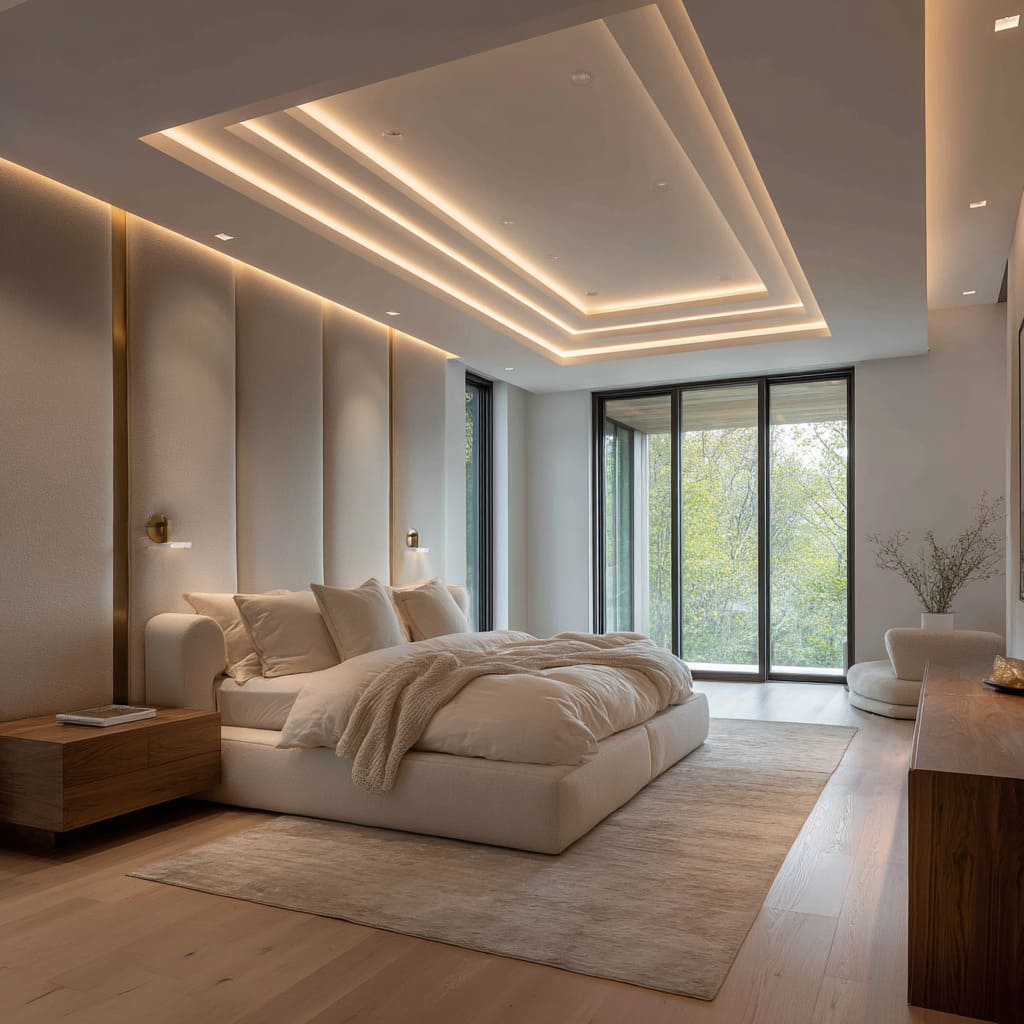Discover how to design a modern bedroom that feels elevated, luxurious, and effortlessly airy—with every detail working in quiet harmony.

Luxury today doesn’t mean cluttered or overdesigned. In the most sophisticated modern bedrooms, elegance is expressed through simplicity, space, and thoughtful detail. From sleek built-in storage to calming color palettes and sculptural lighting, these bedrooms strike the perfect balance between style and serenity. Whether you’re dreaming of a minimalist retreat or a designer-worthy sanctuary, this guide will show you how to create a space that feels as refined as it looks.

Some bedrooms impress with bold colors and statement pieces—but the most luxurious ones don’t need to raise their voice. They speak in quiet gestures: a floating nightstand with a shadow line, a sculptural reading chair breaking up clean geometry, or a narrow ledge holding one perfectly placed object. In these spaces, luxury lives in restraint. It’s the rhythm between materials, the intentional gaps between pieces, the way soft daylight travels across a plastered wall or matte headboard. This new era of bedroom design isn’t about piling on luxury—it’s about curating it. From calm color palettes and clean-lined furniture to ambient lighting that hides its source, every detail is deliberate. These aren’t bedrooms that wow at first glance. They stay with you because everything feels effortlessly right—even if you can’t explain why.
Floating Forms and Intentional Shadows
One of the most striking features in high-end living rooms is the consistent use of elevated design elements—both physically and visually. From bench-style seating and wall-mounted consoles to floating hearths and extended shelving, these pieces are purposefully detached from the floor or wall, creating a subtle, weightless effect that feels like they’re gently hovering in space.

A subtle gap beneath or behind these elements allows light to pass through, casting a crisp shadow line that visually lifts each piece from its surroundings. This slender band of darkness adds definition—not through bold contrast or decoration, but through restraint.
It’s the kind of detail that’s easy to overlook at first, yet it transforms the room’s atmosphere. What could feel heavy or solid—especially when made of stone, wood, or plaster—suddenly appears intentional, light, and refined.

This technique transforms built-in features into sculptural elements by incorporating negative space as a key part of the design language. In elegant living room decor where tone-on-tone materials prevail, this subtle approach becomes crucial—it outlines boundaries without bold framing and introduces a serene sense of precision to the overall layout.
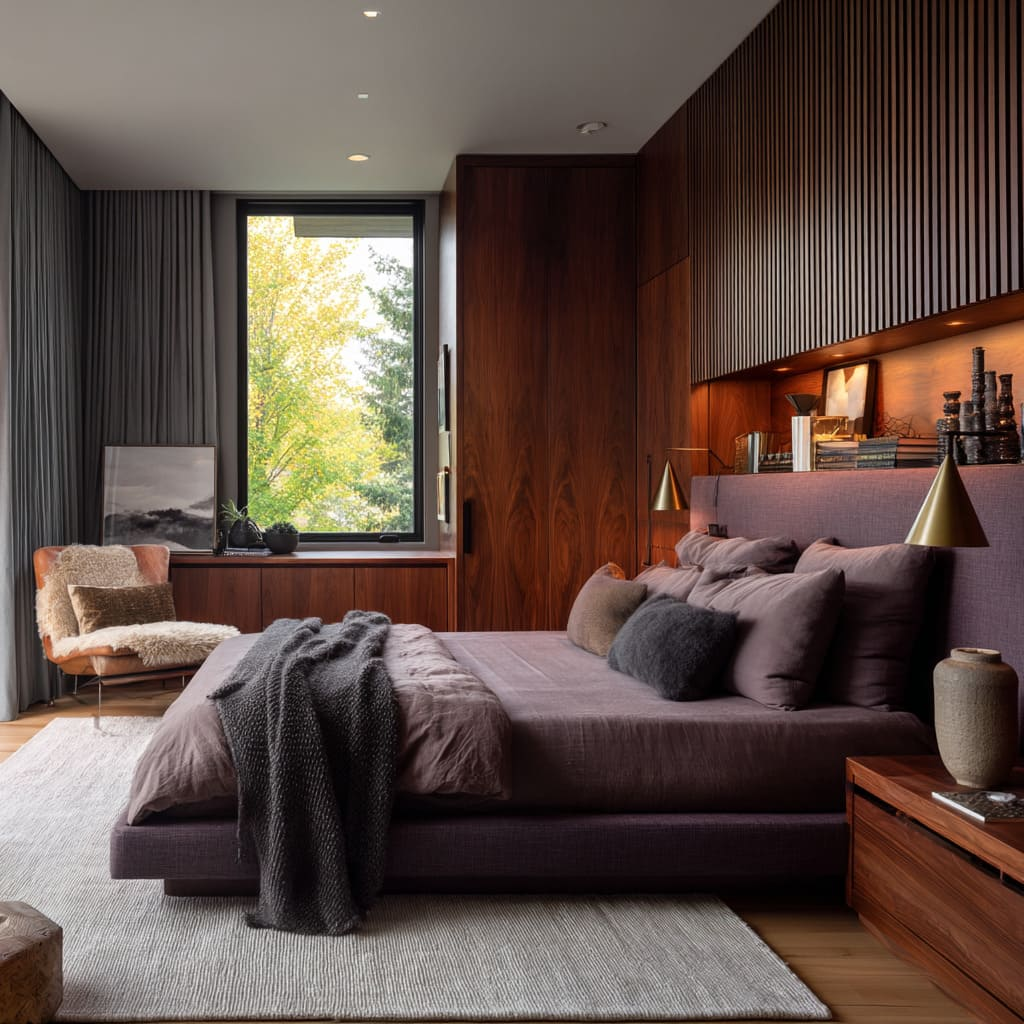
Structured Vertical Patterns with Mirrored Geometry
A gentle, low-key rhythm flows through many of these interiors. Vertical grooves, slatted panels, and ribbed textures introduce tactile surfaces that shift in appearance as the light moves across them.
Crafted from timber, plaster, or even metal, these features remain understated—never attention-seeking. Their presence is steady and calm, more akin to the slow pulse of a drum than the sharp crash of a cymbal.
This visual rhythm rarely exists in isolation; it’s often echoed thoughtfully elsewhere in the space, creating a quiet conversation across the room.
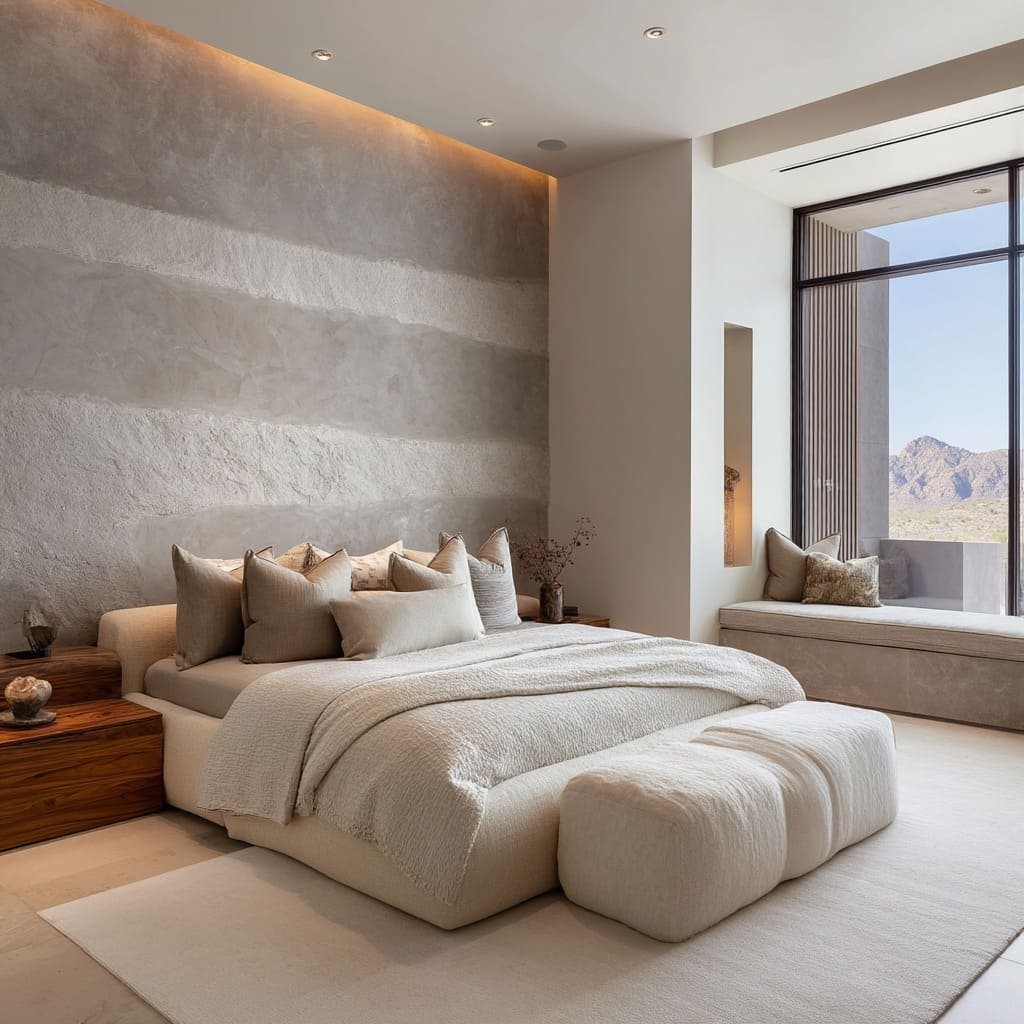
A vertically fluted fireplace might subtly mirror the texture of nearby upholstered chairs. Slatted cabinetry details may be echoed in the design of open shelving or along the edge of a coffee table.
These recurring motifs create a sense of cohesion without relying on strict symmetry. With everything held within a restrained palette, the textures don’t clash—they work together, building depth slowly through layers of understated detail.

It’s one of the reasons fancy living rooms feel so thoughtfully composed—even when no single element demands attention. The vertical design language also offers a quiet bonus: it gently elevates the space.
Grooved textures catch overhead light and draw the eye upward, creating the illusion of height without changing the actual ceiling level.

Elegant Monochrome Palettes with Delicate Textural Balance
A defining feature of many elegant sitting rooms is their serene use of tone-on-tone palettes—where color shifts are so subtle they’re barely noticeable at first, yet deepen with time and attention. Rather than relying on bold contrast, these spaces achieve depth through quiet layers: matte paired with polished, structured alongside soft.
The distinction lies less in hue and more in texture and finish. A bleached oak cabinet, for instance, might sit beside a brushed version of the same wood—each surface catching light in its own unique way.

Bouclé upholstery gently softens the edge of a velvet cushion, while travertine casts a warm glow beside smooth plaster. Within this neutral envelope, a single accent color—perhaps camel, rust, or sand—might appear just once or twice.
A throw pillow may quietly reflect a tone found in the rug, or a leather chair might echo the warmth of a nearby woven textile. This kind of intentional repetition brings definition without distraction, allowing the room to feel composed and serene—not flat.
It’s a technique often found in refined living room designs, where visual interest arises from how materials interact with light and contrast softly, without a sound.
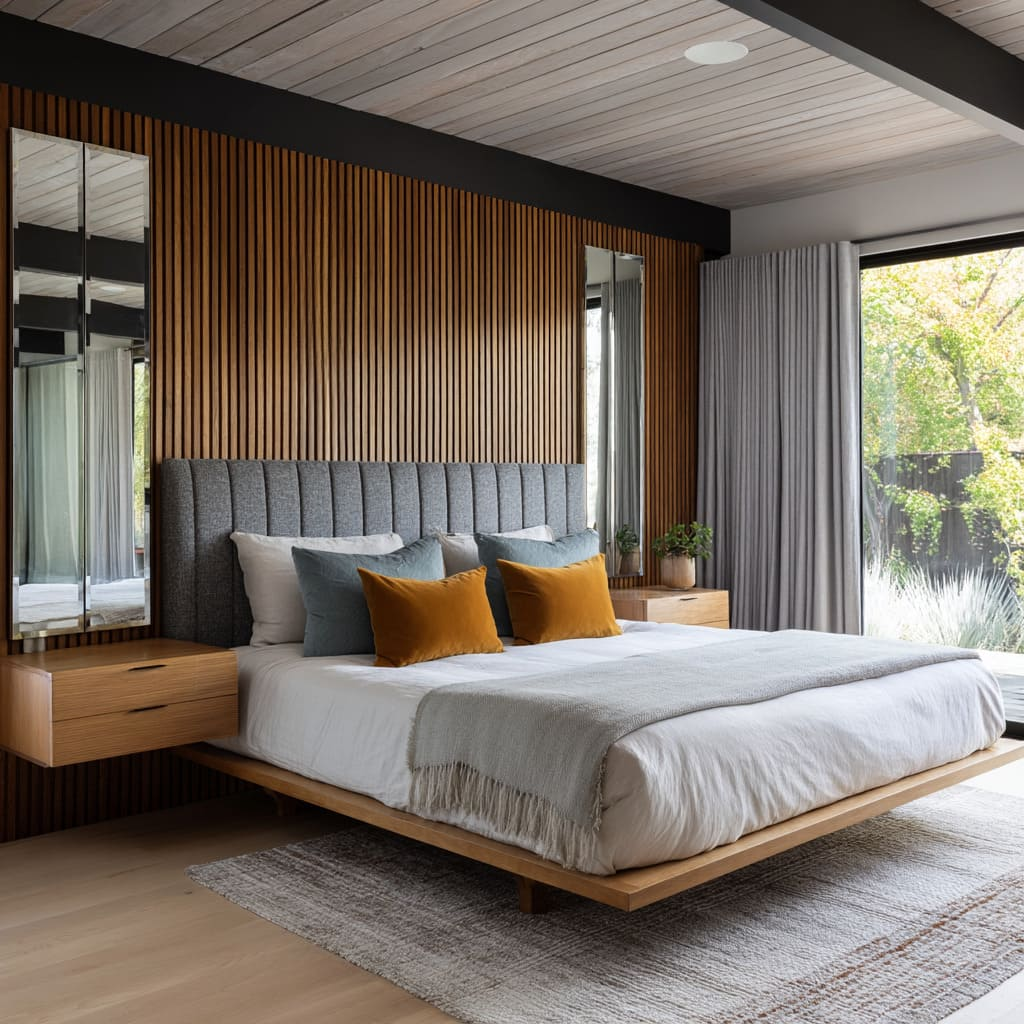
Organic Forms Balancing Linear Architecture
Straight lines shape the architecture, but it’s the curves that breathe life into it. Within these boxy frameworks, rounded forms emerge with intention—semi-circular sofas, curved coffee tables, arched chairs, even gentle, wave-like ceiling recesses.
They’re not mere decoration; they guide the space into a more natural, human rhythm.

In open-plan layouts where one area flows seamlessly into the next, sculptural curves help define subtle, invisible boundaries. The seating isn’t confined to the walls—it carves out its own place, using form to invite and gather.
Upholstery choices often echo this gesture: looped fabrics like corduroy or textured wools reflect the same softness, repeating the curves in their tactile surfaces.

A bouclé barrel chair positioned beneath soft overhead lighting casts gentle shadows, transforming its form into a visual pause. These curved pieces function like punctuation marks—slowing the gaze, shifting the atmosphere, and bringing harmony to the sharper architectural lines around them.
They help the room feel thoughtfully composed yet relaxed—an essential counterbalance in spacious layouts defined by the openness of a refined living room.

Purposeful Placement for Visual Harmony
Open shelving is a frequent feature in these interiors, but it’s approached with intention rather than informality. Each shelf carries just a few carefully selected objects—typically no more than three—chosen less for bold color and more for their shape, texture, and subtle presence.
Books are stacked with spines turned inward or wrapped in muted tones, reinforcing a quiet, cohesive aesthetic.
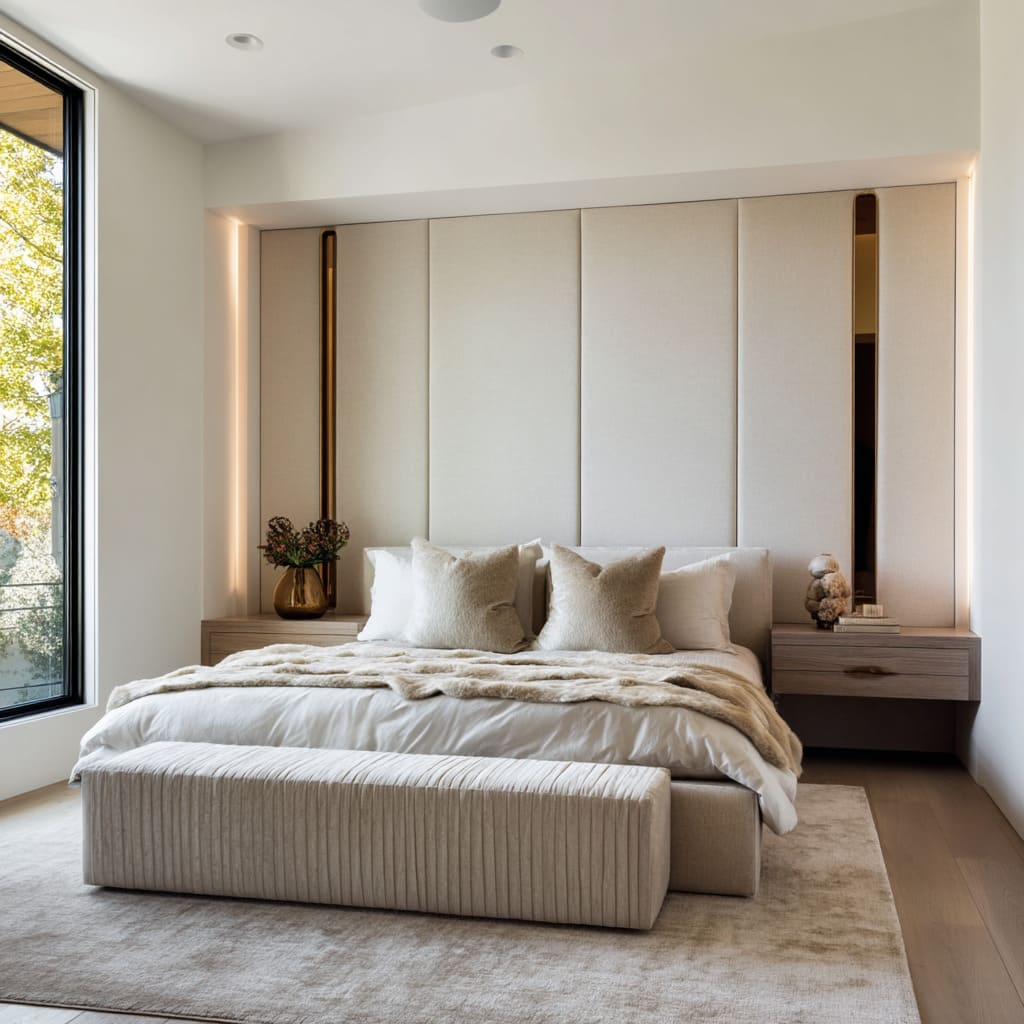
Ceramic vessels, textured bowls, and dried organic forms are placed not as mere decorations, but as integral parts of the spatial composition. This selective arrangement introduces intentional pauses in the visual rhythm.
Empty stretches of shelving hold equal weight to the objects themselves—not as a statement of austerity, but as a way to slow the gaze, inviting true attention rather than a passing glance.
In the realm of refined living room decor, this kind of restraint signals a quiet mastery. Negative space doesn’t read as emptiness—it amplifies the richness and detail of every surrounding surface and silhouette.

Order in the Organic: Composing with Veins and Texture
Stonework is a defining element in many of these interiors, used with deliberate precision. It’s not just about choosing the right material—be it travertine, limestone, or marble—but about harnessing the direction and movement of its natural veining.
Veins are aligned with purpose: running horizontally to visually stretch a wall, or vertically to draw the eye upward and elevate the space. Every placement responds to the room’s proportions, reinforcing its architecture with subtle, sculptural intent.

Soft Illumination, Hard Edges: Where Architecture Lights Itself
In many of these interiors, lighting functions more as an ambiance than a visible fixture. Rather than relying on standout pendants or chandeliers, illumination is seamlessly integrated into the architecture—hidden LED strips glow gently from behind wall panels, beneath hearth ledges, or within shelving niches.
The light falls softly, highlighting materials and textures subtly, without drawing focus to where it comes from.
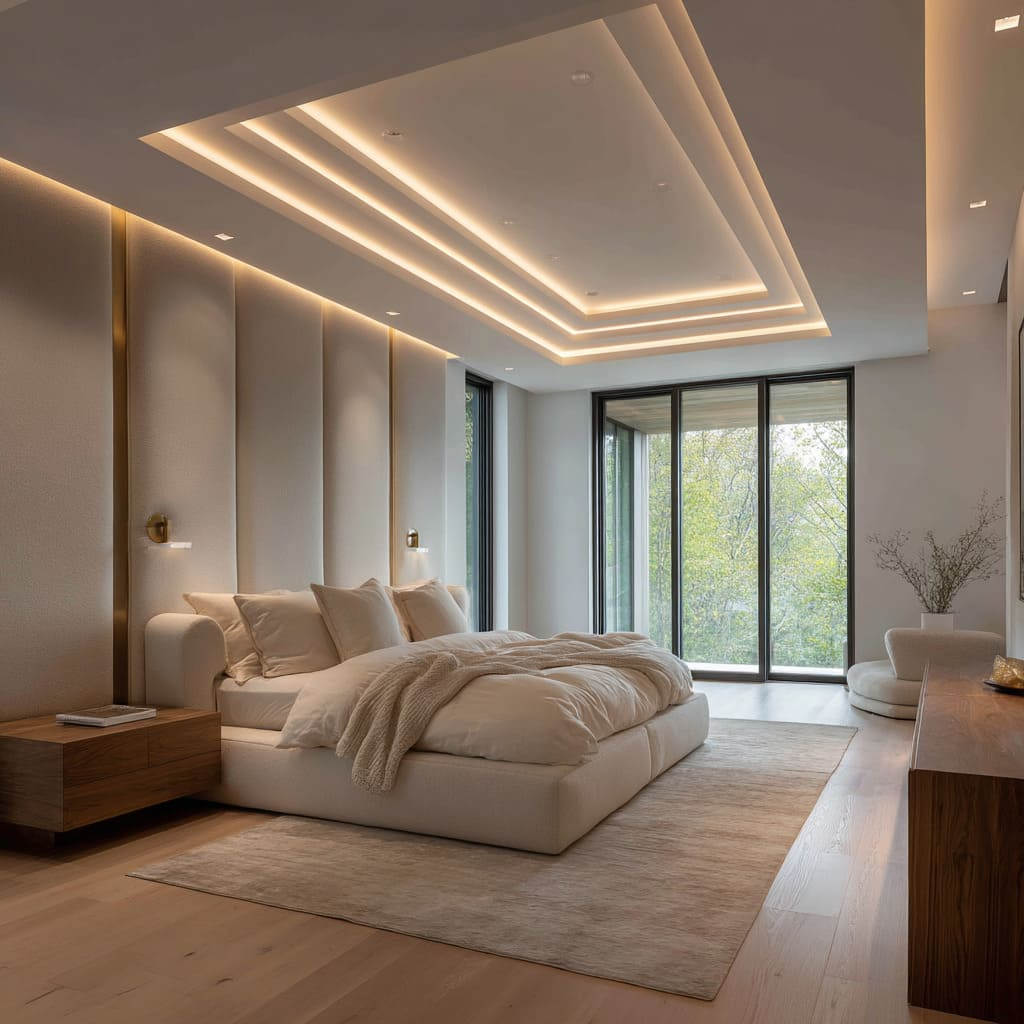
Stone takes on a warmer tone, plaster becomes sculptural, and shelf objects seem softly backlit by natural light. Even the ceiling plays its part: wood slats, recessed borders, and uplighting behind subtle beams work together to make the space feel taller and lighter—without needing bold moves.
This layered, gentle glow doesn’t demand attention—it shapes the atmosphere. In a refined lounge where furniture and finishes remain understated, the way light curves into corners and flows across surfaces becomes the room’s most compelling detail.
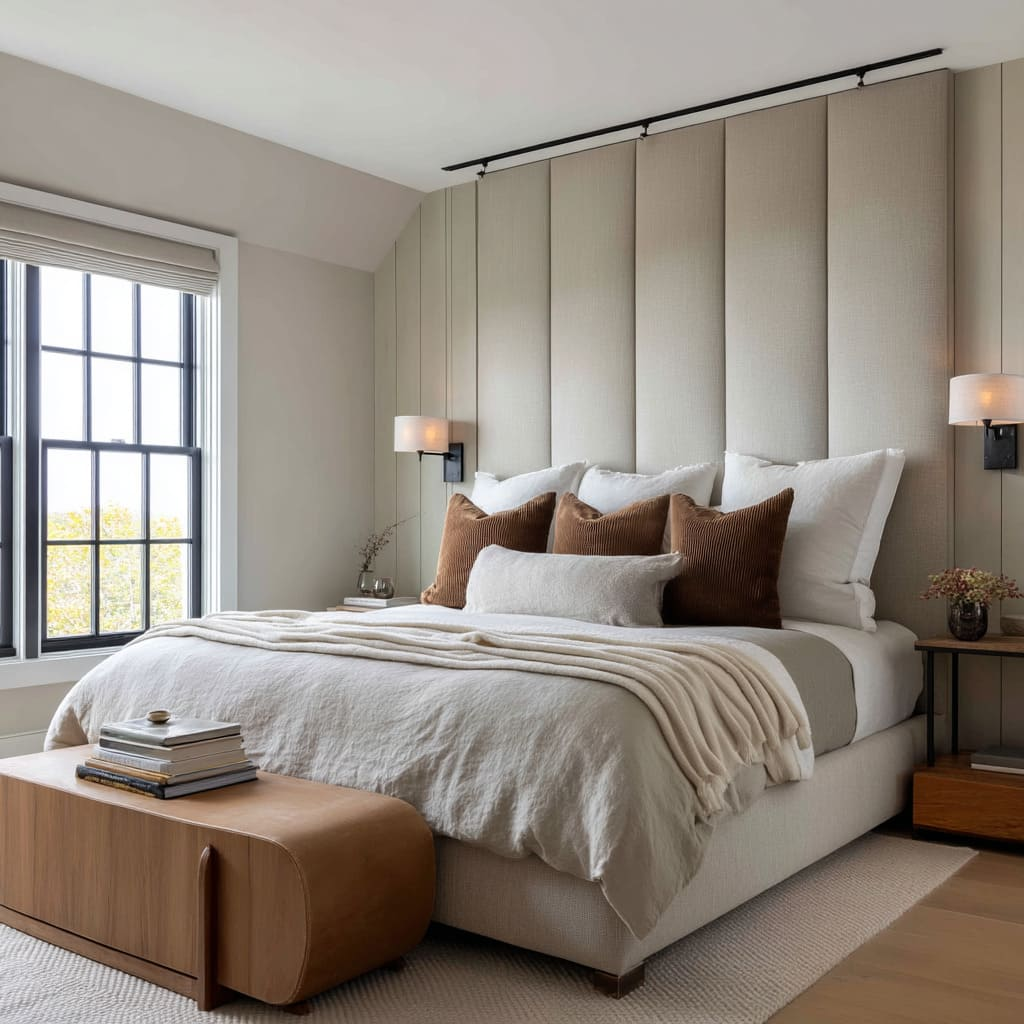
These repetitions aren’t merely decorative—they serve as subtle connections. In a sophisticated modern living room where the palette tends toward monochrome, a single splash of green from an olive tree or a hint of blue from the horizon becomes the room’s sole moving color.
The impact is quiet yet powerful: the outdoors seamlessly integrates into the interior’s rhythm, changing with the time of day or season, maintaining a gentle, ongoing conversation with the space.
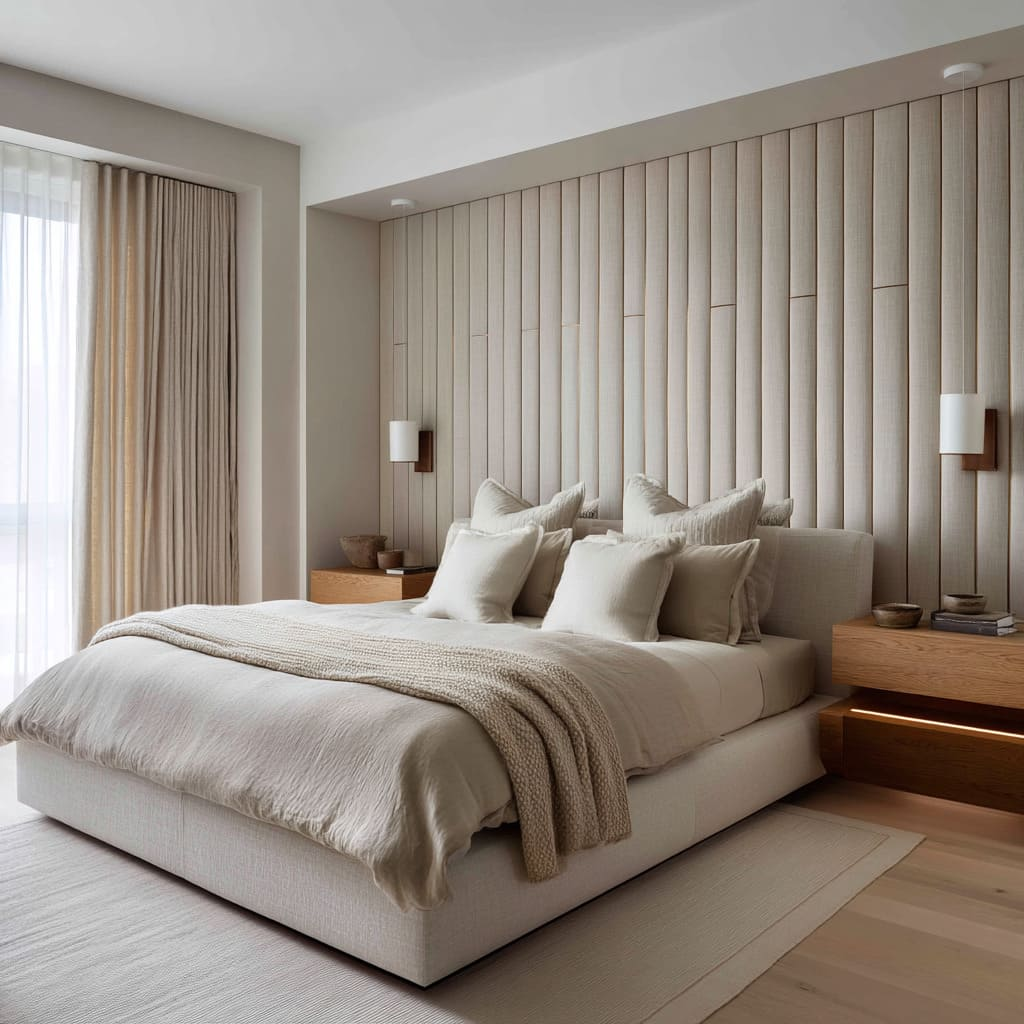
Conclusion: Quiet Mastery in Fancy Living Room Design
These elegant living rooms embrace restraint over excess. Light and shadow give weight to heavy forms, while textures and curves add subtle softness and rhythm. Minimal accents and disciplined stonework create harmony without overwhelming the space.
Control is key—over shape, texture, and what’s included or left out. Light feels natural yet carefully crafted, framing a calm, ever-changing view outside.
The result is a refined, balanced space where every detail is purposeful and even silence feels intentional

